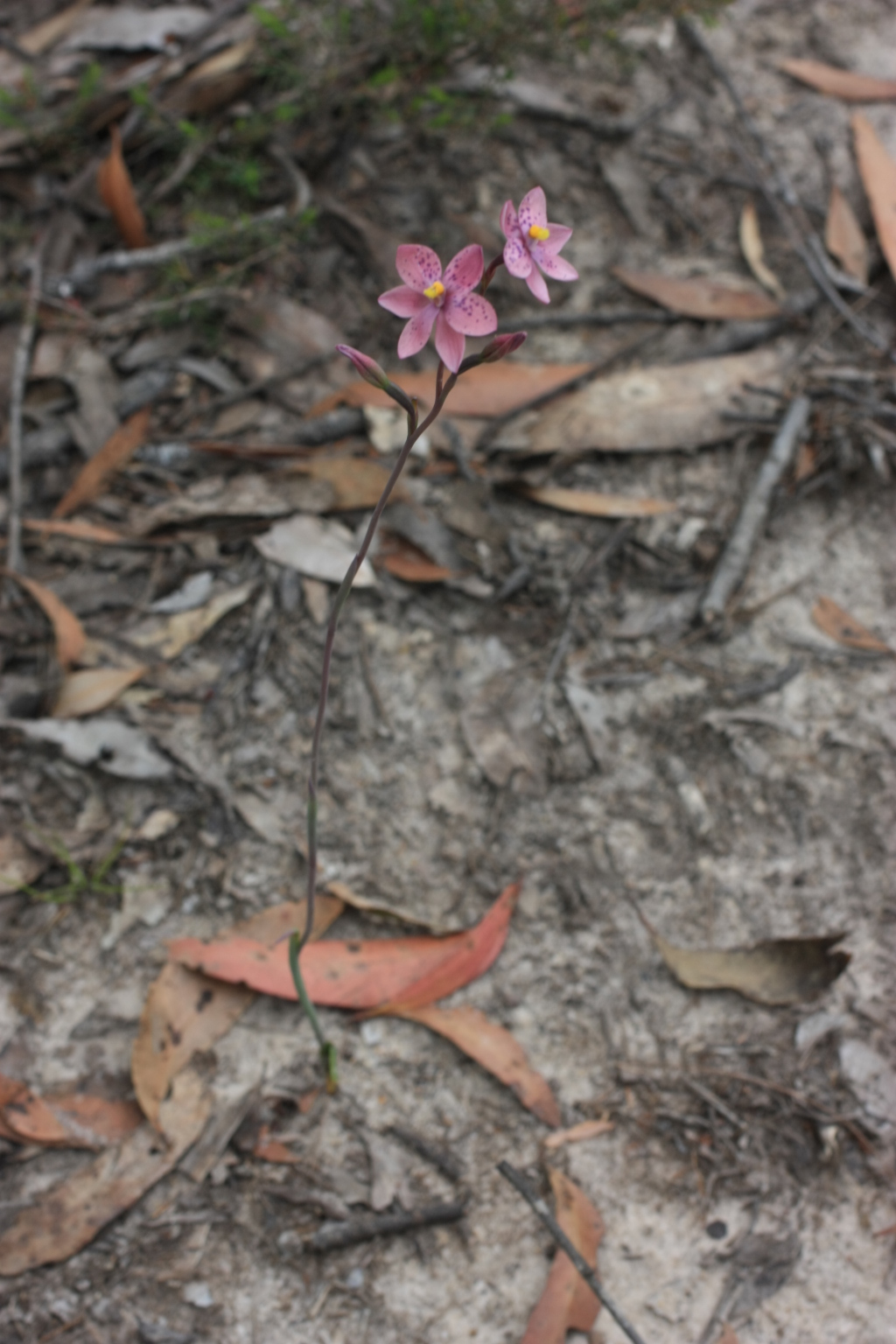Thelymitra ×irregularis
NichollsFlowering stem erect, nearly straight, 20–40 cm tall, 1–2.5 mm diam., pink or purplish. Leaf linear-lanceolate, attenuate, 10–20 cm long, 2–4 mm wide, rather thin, canaliculate, dark green. Inflorescence (1–)2–4(–8)-flowered. Sterile bracts 1 or 2. Perianth segments ovate-lanceolate, 7–10 mm long, bright rose-pink with darker spots. Column 6–7 mm long, pink with darker band on top; mid-lobe expanded into an irregular, semicircular yellow crest, flanked by rows of calli; lateral lobes directed upwards into flat golden-yellow penicillate processes. Anther with obtuse apex just protruding between lateral lobes of column. Flowers Sep.–Nov.
GipP, OtP, GGr, DunT, EGL, HSF, HNF, VAlp. Also SA, NSW, Tas. Believed to be a natural hybrid between T. ixioides and either T. carnea or T. rubra, sporadically occurring where the parent-species grow intermingled. Flowers Oct.-Nov. Widespread but rare in heathland, woodland and open forest on well-drained sand or clay loams.
An apparently fertile hybrid between T. ixioides and T. carnea, which occurs sporadically wherever the parents grow together. Hybrids of similar morphology occur between T. ixioides and T. carnea.
Unspotted variants of T. ×irregularis are sometimes incorrectly identified as T. luteocilium.
Flowers expand freely on warm days.
Weber, J.Z.; Entwisle, T.J. (1994). Thelymitra. In: Walsh, N.G.; Entwisle, T.J., Flora of Victoria Vol. 2, Ferns and Allied Plants, Conifers and Monocotyledons, pp. 840–854. Inkata Press, Melbourne.
 Spinning
Spinning
